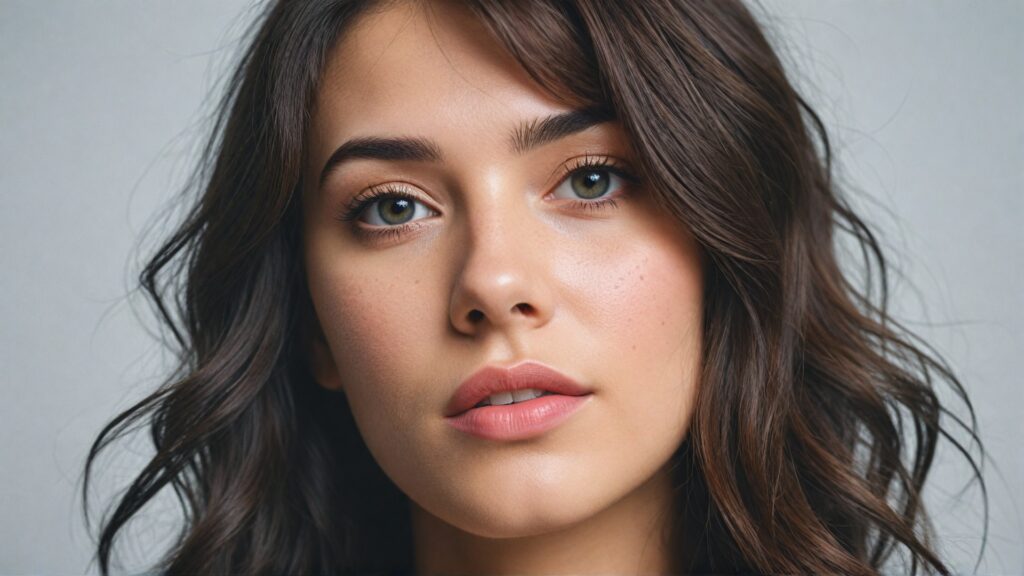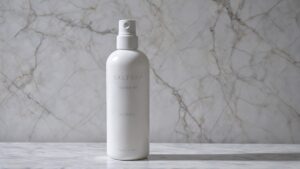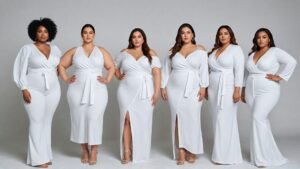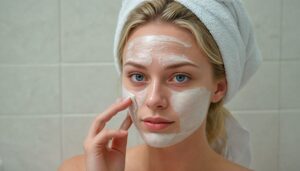According to a Redbook poll, 74% responded that a bad hair day makes their day less confident. So, if your hair is good, it undoubtedly looks better.
Healthy is nothing less than a goal for everybody, even those who don’t pay much attention to their hair. Whether it is spiky, supple, framing your face, or Rapunzel-length locks, everybody wants their hair to add more lure to their personality.
Your strands are constantly prone to hair damage like thinning, frizz, dryness, breakage, dullness, and more. With all these potential strand stresses, it’s no surprise that you need to make efforts to keep it looking lush. And as there’s no secret to doing that instantly, taking time to take care of your strands is a worthwhile commitment. Just a few small tweaks and your hair will be healthier.
What Does Healthy Hair Look Like?
Just like several hair types, there are also significant signs of healthy hair. Healthy hair is free of breakage and split ends, so it achieves its maximum potential for that certain hair type.
For instance, a curly hair pattern, might not be excessively shiny. But as long as you don’t experience excess loss or breakage during washes, your hair is healthy.
According to experts, there are signs of healthy hair, but they may not apply to all hair types. Experts say that we shouldn’t define our hair as healthy based on certain cultural standards. So, what does healthy hair look like?
- Reflects light
- Does not contain dandruff.
- Contains moisture
- Does not break when you brush.
- Exhibits minimal shedding and little breakage.
12 tips for healthy hair
Keeping hair healthy doesn’t happen like magic. It takes time, effort, and a little money to keep your hair in optimal, healthy shape. Below are some valuable tips from experts to keep your hair healthy, even if it is damaged at the start.
Know thy hair
How often should you shampoo your hair? What should I add to my diet, and when? There are several conflicting views about everything. Personal preferences and individual needs are the most important things. It depends on:
- Hair type and texture
- How often do you use hair products?
Activity level
For example, if you have oily hair, you may have to shampoo every day. While people with dry hair may need to be less frequent with shampoo.
Omega Fatty Acids
Omega-3 fatty acids may have a positive impact on stimulating hair follicles and sebaceous glands. It may improve scalp health, but it will not cause your hair to grow.
Cold-water fish, such as salmon, sardines, and herring, are the best sources of omega-3 fatty acids. Other sources for these acids are:
- Cottage cheese
- Salad
Cereal
Flax seed - Yogurt
Wash your hair less often.
I saw students in the university shampooing twice or three times a day, yet their scalps were visible. Doing shampoo is good until we start overdoing it.
Over-shampooing strips natural oils from your head and scalp. More often, it also leads to leaving some shampoo left unrinsed. This builds up on the hair and leaves it looking dull and lifeless.
Washing your hair a few times a week is good for its health. It maintains oil balance for most hair types. Once every 2–3 days is a good balancing act to maintain the health of your hair.
Get condition-specific
Conditioning is an important act in keeping your hair soft, shiny, and manageable after shampooing. You can also choose a separate conditioner or a shampoo with a built-in conditioner.
Comb conditioner for even distribution. However, leave for two to three minutes, or as advised, before rinsing out.
Just like hair washing, conditioning is not necessary every time you wash your hair. Experiment with what works best for you and follow it.
Brush your hair when dry vs. wet.
Hair is more likely to breakage if brushed when wet. Avoiding brushing can help you avoid:
- Prevent flyaways
- Split ends
- Damage
Brushing when the hair is almost or completely dry is the best time to do so. Brushing also depends on the texture of the hair. Hair is likely to be three times more vulnerable to breakage when it’s wet. Also, avoid rubbing wet hair excessively.
For example, you can’t brush curly hair when it ages; it can potentially cause damage. If brushing wet hair is irresistible for you, do it with a wide-tooth comb instead of a hairbrush. If you comb slowly, tooth combs are more gentle on the scalp and hair follicles. So you should know your hair type and comb accordingly, either wet or dry. Furthermore, the standard thumbs of the rule for brushing are:
- Use only enough product to wash your hair.
- Avoid very hot or very cold water for washing.
- Don’t wash your hair more than once a day.
Pump up the protein.
- Hair and scalp health can be in safe hands if you follow a well-rounded diet. Protein is the primary factor in hair production. So you should add protein to your daily diet. According to experts, add at least 45 grams of protein daily. Common and daily accessible protein sources are:
Beans
Low-fat dairy products - Eggs
Lean meat - Poultry
Fish
Lack of protein in your diet can lead to weaker, brittle hair and a loss of hair color. This can also lead to excessive hair loss.
Choose the right shampoo
This is an extremely important point when it comes to hair health. Using the wrong shampoo and styling agent can have a significant impact on the health of your hair. So looking for the right product for your hair is important for your hair type.
You need to choose shampoo according to your hair type: oily, dry, or normal. If there is any problem, like dandruff, choose the product accordingly.
Consider the ingredients used in making shampoo to avoid any harmful ingredients for your hair type or in general. For example, ammonium lauryl sulfate or sodium lauryl sulfate are harsh ingredients for hair. Remember, cost doesn’t determine the quality of the product. Sometimes vigorously marketed things get more attention than healthier ones.
Zinc about it
- Hair can shed with a deficiency of zinc. However, you can combat shedding by adding nuts like Brazil nuts, walnuts, pecans, cashews, and almonds to your diet. Eat and drink an abundance of:
Leafy green salads - Plenty of clean, filtered water
- Fruits
- Vegetables
- Multivitamin or zinc supplements are also good to add to your diet when necessary.
Cut it out.
- Harsh shampoo, hair treatments, styling products, and excessive brushing make the health of your hair poorer. However, other tips include:
Decreased thyroid hormone - Excessive stress
- Blood thinners
- Overconsumption of alcohol
- Low-calorie and crash diets
Heart problems, depression, high blood pressure, and arthritis like prescription drugs.
Protect and moisturize your scalp.
Scalp can get dry if the air is dry, you over-shampoo, or it’s exposed to the sun. For protection from the sun, wear hats and scalp sunscreen. If your indoor air is dry, run a humidifier in your home. Don’t over-shampoo; use a moisturizing shampoo. If the scalp gets dry and flaky, use a deep scalp treatment as needed to hydrate your scalp.
Minimize hair processing.
Changing up the color and style of your hair is fun. However, you have to maintain the look once you start bleaching, dying, or processing. Let your hair rest between processing treatments and give it extra love to rehydrate and recuperate after a chemical workout. Use a hair mask for your bleached, damaged hair.
Hair maintenance tips
To keep your hair in healthy locks, follow these simple tips:
- Whenever it is possible, allow your hair to air dry.
Massage the scalp often to promote hair growth and increase blood circulation. - Start off on the lowest heat setting while blow drying, and increase heat as needed.
- Change up pins and clips so breakage isn’t localized.
- Choose a shade that’s within three shades of your natural color to dye your hair.
- Get your hair cut every 10 to 12 weeks to keep it healthy and prevent split ends.
Signs of Your Potentially Unhealthy Hair
Just like you can probably tell your hair is healthy, you can also tell that something is not going right on top of you. You might be losing more hair than normal, or your hair can be dry. There are also some universal indicators of bad hair that can aggravate depending on the hair type.
Here are some potential signs your hair may be damaging, and these signs may also vary based on hair type:
- Fall out of big clumps of hair.
- The hair is brittle.
- Split at the ends.
- Drier than normal
- Hard to detangle.
- Lacks luster or shine.
- Visible bald spots or can easily see your scalp.
Final Thoughts
So, you can keep your hair healthy by taking just a few simple steps. And all it takes are these simple steps to keep your strands healthy and lush. With these steps, you can bid bad hair days goodbye! However, if you face excessive hair fall and damage despite this, you should consult your doctor.
Taking health care isn’t like moving a mountain, but once they start deteriorating, doing nothing will certainly make things a lot more difficult. So prevention is better than care, and that is the best way forward!





buy generic omnacortil 10mg prednisolone generic prednisolone 10mg oral
buy prednisone tablets prednisone 10mg brand
deltasone 20mg for sale purchase prednisone sale
order amoxil for sale buy amoxicillin generic buy amoxil paypal
purchase monodox online purchase doxycycline for sale
generic amoxicillin 1000mg amoxicillin cost brand amoxicillin
generic monodox order monodox without prescription
buy albuterol pill buy albuterol 2mg without prescription oral albuterol
ventolin 2mg usa order albuterol inhalator online albuterol cheap
brand augmentin 375mg order augmentin 625mg without prescription
purchase augmentin pills amoxiclav price
cost synthroid 150mcg synthroid ca buy synthroid 150mcg for sale
synthroid 100mcg us synthroid 75mcg canada levothyroxine pill
order clomiphene sale order clomiphene generic clomiphene pills
clomid pills buy clomid for sale purchase serophene
order rybelsus 14 mg sale buy generic semaglutide for sale order generic semaglutide
deltasone medication buy prednisone 10mg without prescription buy generic prednisone 10mg
buy generic semaglutide 14mg buy semaglutide 14mg online cheap semaglutide 14mg us
accutane uk buy accutane 40mg online order accutane 20mg without prescription
order isotretinoin online buy accutane 40mg pills isotretinoin drug